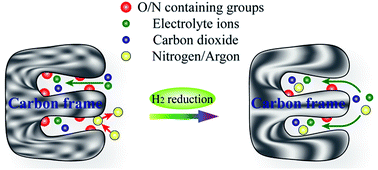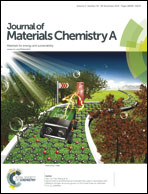On the origin of the high capacitance of carbon derived from seaweed with an apparently low surface area†
Abstract
Low surface area carbon materials, derived from pyrolyzing biomass or polymers, often possess high areal capacitances. However, the well-accepted pseudocapacitance introduced by heteroatoms could not explain this phenomenon without doubt. In order to explore the nature of the energy storage mechanism in these low surface area carbon materials, we prepared a series of laver-based carbon materials by regulating the heteroatom contents and investigated their electrochemical performance. Combining the results of advanced pore structure analyses and electrochemical measurements, we disclose that the presence of ultramicropores, which could not be probed by adsorbates such as nitrogen gas or argon, but are accessible to carbon dioxide or electrolyte ions, plays a most dominant role in the high capacitance of low surface area carbon materials. In this contribution, the previously accepted viewpoint that the capacitance is mainly derived from heteroatoms undergoing Faradaic reactions is challenged.


 Please wait while we load your content...
Please wait while we load your content...